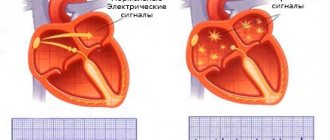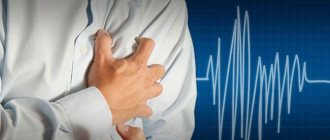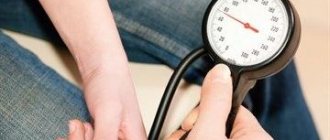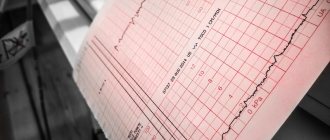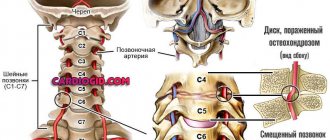general characteristics
Arterial pulse is a rhythmic contraction of the arterial wall caused by the release of blood during contraction of the heart muscle. Pulse waves are formed at the mouth of the aortic valve during the period of blood ejection from the left ventricle. The stroke volume of blood occurs at the moment of increase in systolic pressure, when the diameter of the vessels expands, and during diastole, the dimensions of the vascular walls are restored to their original parameters. Consequently, during the period of cyclic contractions of the myocardium, a rhythmic oscillation of the aortic walls occurs, which causes a mechanical pulse wave that spreads to large and then to smaller arteries, reaching the capillaries.
The mechanism of pulse wave formation in blood vessels
The further the vessels and arteries are located from the heart, the lower the blood and pulse pressure becomes. In the capillaries, pulse fluctuations are reduced to zero, which makes it impossible to feel the pulse at the level of the arterioles. In vessels of this diameter, blood flows smoothly and evenly.
Rhythmic beat detection parameters
Recording heartbeats is of great importance for determining the state of the cardiovascular system. By determining the pulse, you can find out the strength, frequency and rhythm of myocardial contractions.
The following properties of the pulse are distinguished:
- Frequency. The number of contractions the heart makes in 60 seconds. In an adult at rest, the norm is 60-80 heartbeats per minute.
- Rhythm. Regular repetition of pulse fluctuations and frequency of contractions of the heart muscle. In a state of health, pulse beats follow one after another at regular intervals.
- Filling. The characteristic depends on the pressure values, the amount of circulating blood and the elasticity of the arterial walls. Depending on the presented parameters, good, normal, satisfactory and insufficient pulse are distinguished.
- Voltage. It can be determined by the force that must be applied to stop the propagation of the pulse wave through the artery at the point of compression. When blood pressure is high, the pulse becomes tense and hard. At low blood pressure, the pulse can be assessed as soft.
- Speed. It is determined at the peak of pressure rise, when the artery wall reaches maximum pulse fluctuations. The speed depends on the increase in pressure during systole in the arterial system.
Age-related changes in heart rate
Typically, heart rate changes with age due to degenerative disorders in the circulatory system. In older people, the pulse becomes less frequent, which indicates stretching of the walls of blood vessels and a decrease in their blood supply.
At the beginning of life, the heart rate is unstable and very often irregular, but by the age of seven the pulse parameters become stable. This feature is associated with the functional imperfection of the neurohumoral activity of the myocardium. In emotional and physical rest in children 7-12 years old, heart contractions do not tend to slow down. In addition, during puberty, the heart rate increases. And only from the age of 13-14, processes are activated that help slow down heart contractions.
In childhood, the heart rate is higher than in adults, which is associated with rapid metabolism and high tone of the parasympathetic nervous system. An accelerated pulse plays a major role in ensuring minute blood volume, which guarantees the necessary blood flow to tissues and organs.
What affects heart rate?
The heart rate is influenced by several factors: - training, - ambient temperature, - body position (standing, sitting, lying), - emotional state: excitement, anger, fear, anxiety lead to an increase in heart rate, - excess weight, - intake medications, alcohol or smoking. If an untrained person's heart beats too slowly - less than 60 beats per minute - this is called bradycardia
.
If, at rest, in an untrained adult, the heart beats faster than 100 beats per minute - this is called tachycardia
.
If you experience similar symptoms, which are accompanied by dizziness, shortness of breath or fainting, consult a doctor immediately
.
Determination methods
The study of the arterial pulse is carried out on the main (carotid) and peripheral (wrist) arteries. The main point for determining heart contractions is the wrist, where the radial artery is located. For an accurate examination, it is necessary to palpate both hands, since situations are possible when the lumen of one of the vessels may be compressed by a thrombus. After a comparative analysis of both hands, the one on which the pulse is better palpated is selected. When examining pulse impulses, it is important to place your fingers so that 4 fingers are on the artery at the same time, with the exception of the thumb.
Determination of pulse fluctuations on the radial artery
Other ways to determine your pulse:
- Thigh area. The study of pulse impulses on the femoral artery is carried out in a horizontal position. To do this, you need to place your index and middle fingers in the pubic area, where the inguinal folds are located.
- Cervical region. The carotid artery is examined using two or three fingers. They should be placed on the left or right side of the neck, 2-3 cm away from the lower jaw. It is recommended to carry out palpation from the inside of the neck in the area of the thyroid cartilage.
Determining the pulse on the radial artery can be difficult in case of weak cardiac activity, therefore it is recommended to measure the heart rate on the main artery.
Normal limits
The normal pulse rate for a healthy person is 60-80 beats per minute. Deviation of these norms to a lesser extent is called bradycardia, and to a greater extent - tachycardia. These deviations indicate the development of pathological changes in the body and act as signs of various diseases. However, there are cases when situations arise that cause physiological acceleration of pulse impulses.
The pulse rate in women is slightly higher than in men, which is associated with instability of the nervous system
Conditions that cause physiological changes in heart rate:
- Sleep (in this state, all metabolic processes slow down, the heart does not experience additional stress, so the frequency of its contractions becomes less frequent).
- Daytime fluctuations (at night, the heart rate slows down, and in the afternoon it accelerates).
- Physical activity (hard physical labor provokes an increase in the frequency of the heart, mainly strengthening the work of the left ventricle).
- Emotional and mental stress (anxious states and periods of joy cause increased pulse fluctuations, which go away on their own after the restoration of normal emotional background).
- Fever (with each degree of increase in temperature, heart contractions accelerate by 10 beats per minute).
- Drinks (alcohol and caffeine speed up the heart rate).
- Medicines (taking libido enhancers and antidepressants can cause frequent pulse beats).
- Hormonal imbalance (women during menopause experience tachycardia caused by changes in hormonal levels).
- Athletes (the cardiovascular system of this category is trained, therefore it is not susceptible to sudden changes; they are characterized by a rare pulse).
How and why to count your pulse?
Pulse detection is the simplest and most accessible in any conditions, a method for studying the state of the cardiovascular system, its reserve capabilities and pathological changes. That's why every person should learn to count it.What is pulse? If you put your finger on those parts of the body where large arteries are close (on the neck, in the temples, on the back of the foot, etc.), then under the finger you will feel jerky rhythmic vibrations of the walls of these arteries, which are usually called arterial pulse . It occurs with each contraction of the heart, when, at the moment of expulsion of blood, the pressure in the aorta rises and the pulse wave spreads along the walls of the arteries down to the smallest capillaries.
The most convenient point for determining the pulse in extreme situations is on the main cervical artery - the carotid artery. It is easy to find if you run your fingers from the back corner of the lower jaw down the neck until your fingers rest in the depression next to the windpipe, where the pulsation of the carotid artery can be clearly felt.
But most often the pulse is determined on the radial artery at the base of the thumb. To do this, the index, middle and ring fingers are placed slightly above the wrist joint, the artery is felt and pressed against the bone. In this case, the hand of the examined hand should be located at the level of the heart.
If the pulse beats follow at regular intervals, then the pulse is considered rhythmic (correct); otherwise - arrhythmic (irregular).
Another important characteristic of the pulse is its frequency . To determine it, count the number of beats in 10 seconds , and the result is multiplied by 6. If the rhythm is incorrect, the number of beats (frequency) of the pulse must be counted within a minute . Moreover, each person has his own pulse rate. In healthy people, it always corresponds to the heart rate 60-80 beats per minute at rest in men , and 5-10 beats more often in women. But even normally, under the influence of various factors, the pulse rate fluctuates within a fairly wide range. Thus, in a healthy adult, the lowest pulse rate is observed in a lying position; in a sitting position, the pulse increases by 4-6 beats per minute, and in a standing position – by 10-14 beats per minute. In winter, the pulse is usually slightly lower than in summer. Its frequency also changes during the day: from 8 to 12 o'clock it is maximum, then until 14 o'clock the pulse gradually slows down, from 15 o'clock it increases somewhat again, reaching its highest value by 18-20 o'clock, and in the middle of the night, when a person is sleeping, the pulse the slowest. The pulse increases noticeably after drinking hot liquids and food, but cold drinks, on the contrary, slow it down.
Fluctuations in heart rate are also associated with physical activity : the more intense the muscle work, the faster the pulse. It is very important to know the maximum permissible heart rate value. To do this, subtract your age from 220. And to find out your personal optimal heart rate , you need to multiply the difference by 0.7 (or by 0.6 if you are over sixty or in poor physical shape). To determine the lower limit of the heart rate, you need to multiply this difference by 0.5. For example, if you are a healthy 50-year-old man, subtract 50 from 220 and get a maximum allowable heart rate of 170 beats per minute. Multiplying 170 by 0.7 gives the result 119 - the optimal indicator that you should adhere to during any physical activity. Multiplying 170 by 0.5 we get the minimum heart rate for your age - 85 beats per minute.
A pulse less than 60 beats per minute is called bradycardia . The cause of its occurrence may be a decrease in the function of the thyroid gland, some heart diseases, etc. However, a decrease in heart rate, achieved through regular physical training, is a beneficial factor for health, since the heart in this case works more economically: the stroke volume of the blood increases, and cardiac pauses increase.
The pumping capacity of the heart at the moment of contraction determines the filling of the pulse , that is, the filling of the artery with blood ejected by the heart during one systole (contraction) of the ventricle, which is determined by the degree of increase and decrease in the volume of the artery at the moment of passage of the pulse wave. In accordance with this, a distinction is made between a full pulse , which gives a feeling of abundant filling, as well as an empty and thread-like pulse , which are often observed in acute cardiovascular failure.
A.A.
Diagnostic methods
The study of heart rate allows you to assess the state of the cardiovascular system and identify possible deviations from the norm. Using the generally accepted characteristics of the pulse, you can learn about the condition of the myocardium, heart valves and the elasticity of the vascular walls. Pulse impulses are recorded using graphic research methods, as well as by palpation of vessels located on the surface of the body.
The main method of studying the pulse is palpation, which allows you to evaluate its properties.
There are two main methods for determining pulse fluctuations:
- Sphygmography. A method that allows you to graphically display the arterial pulse. Using special sensors, the pulse wave is recorded.
- Palpation. During the examination, the pulse in the radial artery is determined. Using your fingers, the frequency of the pulse impulses is determined.
Determination of arterial pulse plays an important diagnostic role in assessing the patient's health status. Knowledge about the properties of pulse fluctuations makes it possible to identify possible hemodynamic disorders and pathological changes in the functioning of the heart.
What is maximum heart rate?
This indicator tells you how many beats per minute your heart can make maximum - during physical activity. When playing sports, it allows you to evaluate how intense the load you are receiving. Typically, the maximum heart rate is calculated using a mathematical formula that takes into account the person’s age. For adult men, MHR = 220 – age
. That is, a 25-year-old man would have a maximum heart rate of 195 beats per minute. For adult women, the calculation is the same, but sometimes an adjusted formula is used: MHR = 226 – age. That is, for a 25-year-old woman this figure will be 201 beats per minute.
Tags:
- Workout
- Pulse
- Diagnostics

